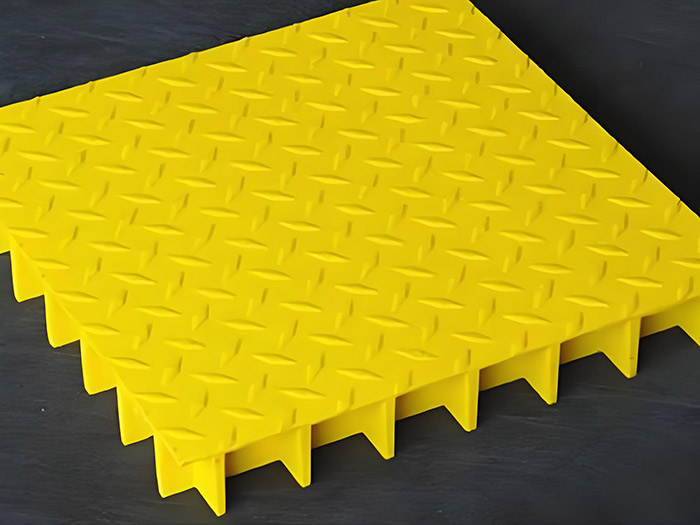FRP I Beam for Oil and Gas Industry: Enhancing Strength and Durability in Challenging Environments
The oil and gas industry operates in some of the most demanding environments on the planet. From harsh weather conditions to corrosive substances, the infrastructure must withstand extreme stress without compromising safety or efficiency. Traditional materials like steel are often used, but they can suffer from corrosion, weight issues, and limited lifespan. This is where Fiber-Reinforced Polymer (FRP) I-beams come into play, offering a superior solution for enhancing strength and durability.
What Are FRP I Beams, and How Do They Differ from Traditional Materials?

FRP I-beams are composite structures made from a combination of fiberglass reinforcement and a polymer matrix. Unlike traditional steel beams, they are lightweight yet incredibly strong, making them ideal for oil and gas applications where weight reduction can improve structural efficiency. Additionally, FRP does not corrode, which is a significant advantage in environments exposed to saltwater, chemicals, or extreme temperatures.
One common question is: How do FRP I-beams compare to steel in terms of strength-to-weight ratio? The answer lies in their composition. While steel beams are dense and heavy, FRP beams provide the same strength with up to 75% less weight. This reduction in weight not only lowers transportation costs but also reduces the load on supporting structures, making them a cost-effective choice for offshore platforms, pipelines, and storage tanks.
Why Are FRP I Beams Essential for the Oil and Gas Industry?
The oil and gas sector faces unique challenges, including exposure to corrosive substances like crude oil, hydrogen sulfide, and saltwater. Traditional steel infrastructure often requires frequent maintenance, coatings, or cathodic protection to prevent corrosion, which can be both expensive and time-consuming. FRP I-beams, however, are inherently resistant to corrosion, reducing the need for ongoing maintenance and extending service life.
Another critical concern is the harsh environmental conditions in oil and gas operations. Extreme temperatures, UV radiation, and seismic activity can weaken conventional materials. FRP, on the other hand, maintains its integrity under these conditions, ensuring long-term reliability. This durability is particularly important in offshore applications where maintenance access is limited.
How do FRP I-beams contribute to safety in the oil and gas industry? By reducing the risk of structural failure due to corrosion or fatigue, FRP beams enhance overall safety. They also do not conduct electricity, which minimizes the risk of electrical hazards in environments where pipelines and cables are present.
The Benefits of Using FRP I Beams in Oil and Gas Infrastructure
1. Increased Lifespan
FRP I-beams can last up to 50 years or more, far outperforming steel beams in corrosive environments. This longevity reduces replacement costs and downtime, providing a more sustainable solution.
2. Cost Efficiency
Although the initial investment for FRP I-beams may be higher than steel, their longevity and low maintenance requirements make them cost-effective over time. Additionally, the reduced weight lowers transportation and installation costs.
3. Environmental Resistance
Unlike steel, FRP does not rust or degrade in the presence of chemicals or saltwater. This makes it ideal for coastal regions, inland waterways, and areas with high chemical exposure.
4. Design Flexibility
FRP I-beams can be molded into various shapes and sizes, allowing engineers to design custom solutions for specific applications. This flexibility is particularly useful in complex offshore structures.
Sharing Insights: Best Practices for Implementing FRP I Beams
When transitioning to FRP I-beams, oil and gas companies should consider the following best practices:
- Thorough Material Testing: Ensure the FRP used meets industry standards for strength and corrosion resistance.
- Proper Installation Techniques: FRP beams require specialized installation methods to avoid damage during transit and setup.
- Regular Inspections: While FRP is durable, periodic inspections can help identify any potential issues early on.
By adopting these practices, companies can maximize the benefits of FRP I-beams and enhance the longevity of their infrastructure.
Conclusion
FRP I-beams represent a revolutionary advancement for the oil and gas industry, offering superior strength, durability, and resistance to harsh environments. By addressing common challenges such as corrosion and weight issues, FRP beams provide a reliable and cost-effective solution for long-term infrastructure needs. As the industry continues to evolve, the adoption of FRP technology will undoubtedly play a key role in ensuring safer, more efficient operations worldwide.







